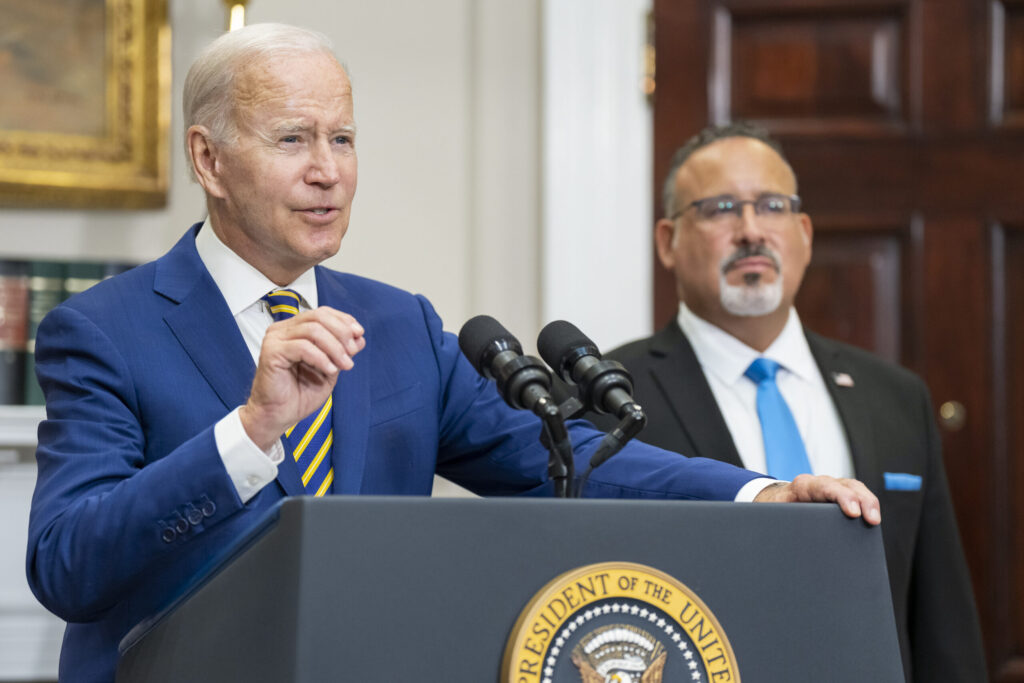
Even in California, infrastructure spending is a climate time bomb. Here’s how to fix it.

Without full transparency on California’s transportation spending, the state’s transportation investments will never align with our climate goals.
This post by Transform Policy Director Zack Deutsch-Gross and T4A Policy Manager Corrigan Salerno was originally published by Next City. Click here to read the original.

With the fifth largest economy in the world, California has for decades set the tone for what is possible on climate, with other states and even countries looking to it for bold policy leadership and direction. Yet while Gov. Gavin Newsom continues to tout California as a climate leader, his transportation agency—operating with little public oversight or accountability—continues to advance harmful projects that will guarantee future increases in emissions.
Nowhere is this contradiction more apparent than in how California is spending its Infrastructure Investment and Jobs Act (IIJA) dollars.
The 2021 Bipartisan Infrastructure Law was hailed by the Biden Administration as the biggest investment in climate in U.S. history. It devoted $1.2 trillion to “rebuild America’s roads, bridges and rail, tackle the climate crisis, advance environmental justice, and invest in communities that have too often been left behind.” But states were given enormous latitude in choosing how to spend the hundreds of billions intended for transportation.
Both states and the federal government failed to embrace climate-forward policy to implement the infrastructure law, predictably directing funds to emissions increasing highway building. California’s current IIJA spending will result in a net increase of over 2.2 million metric tons of greenhouse gasses above pre-IIJA levels by 2040, according to a recent analysis of IIJA grant awards in California by Transportation for America. Despite ambitious climate legislation and impressive emissions reduction targets, California has dedicated more IIJA funds toward emissions-increasing projects than any state except Florida and Texas.
Driving this increase in emissions is the over $2 billion of federal dollars alone that California’s Department of Transportation, Caltrans, is spending on highway expansion. Building more and wider roads encourages more people to drive, undercuts public transit investments and increases greenhouse gas emissions. Transportation is the largest single source of greenhouse gas emissions in California, and one of the few sectors where emissions are still increasing annually. Yet while the state is literally on fire, Caltrans is doubling down on climate arson—a term we do not use lightly.
California’s IIJA spending begins to explain why we are off track when it comes to meeting climate goals. What about the rest of the state’s $30 billion in annual transportation spending?
Unfortunately, we don’t know. Caltrans does not collect and publicly display data in an accessible manner, and reports to the legislature are piecemeal at best. RebuildingCA.ca.gov, the public dashboard Caltrans uses to report on projects, is the best available resource to learn how transportation dollars are being spent in your community. But the website includes no information about how these projects contribute to improving safety, increasing opportunity in disadvantaged communities, or addressing climate change.
This lack of accountability allows Gov. Newsom to proclaim himself a climate leader even as his transportation agency fails to live up to his public promises. We need transparency if we are to hold state agencies to account.
Assemblymember Pilar Schiavo’s Transportation Accountability Act, AB 2086, which Transform is cosponsoring with The Greenlining Institute, will change that.
AB 2086 requires Caltrans to publicly demonstrate how its annual spending on major transportation programs is advancing the vision and goals of the California Transportation Plan. It will streamline existing, fragmented transportation reporting efforts into a uniform and consistent format made publicly available online. This will ensure that the public, lawmakers, and transportation decision-makers can easily access and understand how California’s transportation investments impact their communities and align with the state’s goals.
Now more than ever, we need more than rhetoric. We can’t expect another generational infrastructure investment from the federal government, and in tight budget years to come, California needs to maximize the return on every transportation dollar it spends.
We need to rebuild public trust by demonstrating results to voters through transparent, public reporting. We need to put our money where our mouth is by prioritizing climate-friendly transportation investments. While AB 2086 won’t change transportation spending overnight, it is an essential step toward addressing the climate crisis with fundamental good governance. Without it, all we can expect is continued inaction.



